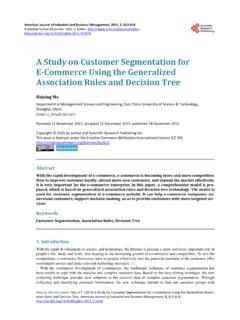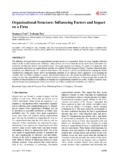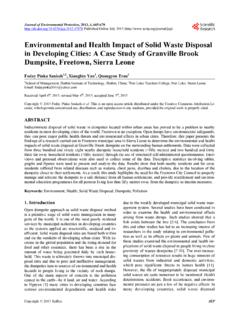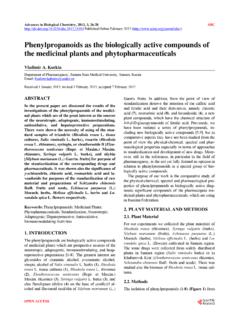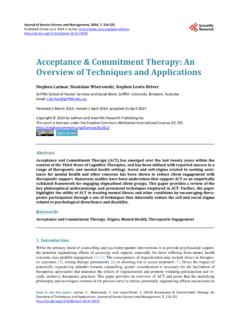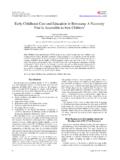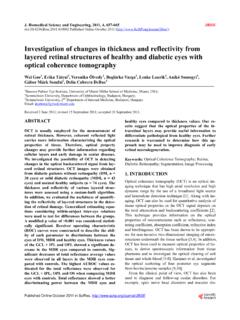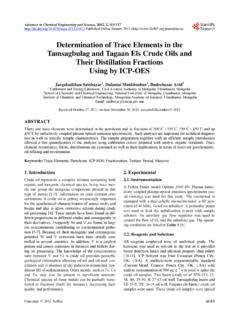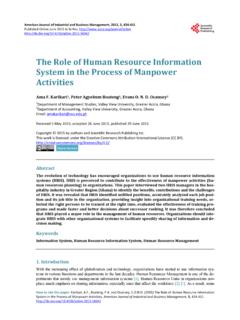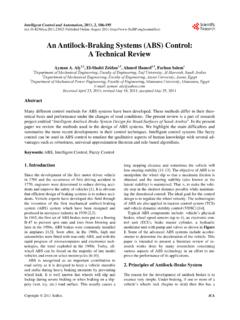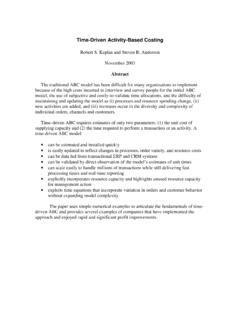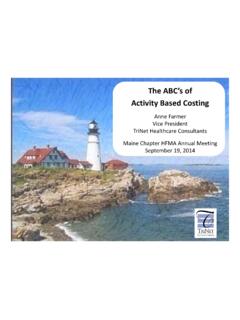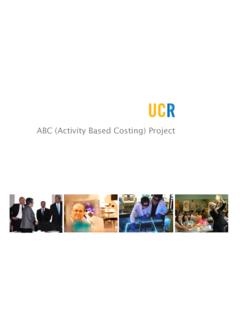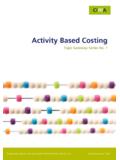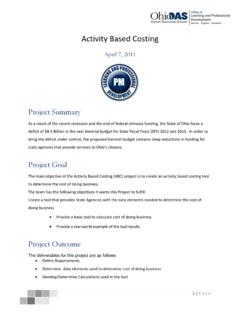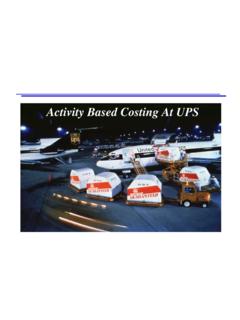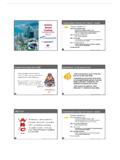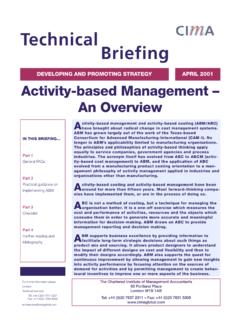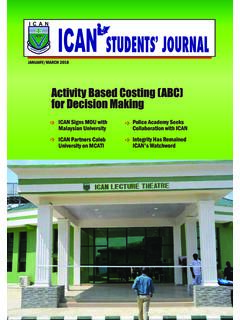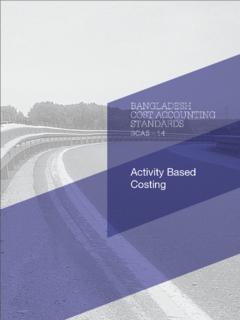Transcription of ABC: Evolution, Problems of Implementation and ...
1 American Journal of Industrial and Business Management, 2012, 2, 55-63 Published Online April 2012 ( ) 55 ABC: Evolution, Problems of Implementation and Organizational Variables Anna Maria Moisello Department of Economics and Business Sciences, University of Pavia, Pavia, Italy. Email: Received January 25th, 2012; revised March 2nd, 2012; accepted March 14th, 2012 ABSTRACT This paper will reflect on the evolution of the functionality of ABC model, focusing attention on the variables that de-termine success or failure in its Implementation . To this end the paper, through the empirical and theoretical literature review, will: trace the evolution of the ABC model, while highlighting the implications of the Implementation process, analyze the concept of success in its Implementation and discuss the determinants that influence the outcome, focusing on the organizational variables that firm have to control in order to succeed with ABC. Keywords: activity based costing ; Implementation Process; Process Factors; Context Factors 1.
2 Introduction Studies on ABC indicate a contradiction: on the one hand, the model shows considerable potential, which has grown throughout its functionalities evolution, in terms of the benefits that can derive starting from the correct determination of cost and arriving at an effective support to management [1,2]; several studies have shown its success in business practice and an increasing adoption rate [3-7]. On the other hand, various empirical analyzes of the model s Implementation reveal a lower than ex-pected success rate regarding its benefits [8,9], a rela-tively low adoption rate [9,10] different opinions about its effectiveness [11] and some studies on ABC diffusion refer that the number of organizations adopting ABC is not growing and it stopped at a lower than expected level [12,13]. It is the so-called ABC paradox [14,15]. The purpose of the paper is to focus through the empirical and theoretical literature review the nature of this con-tradiction and to understand if the success lower than predicted is due to the methodology s limits or to the adopting organizations ones.
3 First of all we will trace the evolution of the model s functionalities to highlight its potentialities in term of effectiveness. Then we will ana-lyze the concept of success of an accounting methodol-ogy in order to explain because the studies reach con-trasting results. Once defined the concept of success we will consider the determinants of not a success in the model Implementation . 2. The Evolution of the ABC Functionality The concept of activity has already been presented in studies by Staubus [16] and Shillinglaw [17], but these works have not directly led either to a series of specific studies or to the spread of the activity approach in busi-ness practice. Studies that effectively raised the debate in this area and led to studies on the topic were published only at the end of the 80 s. When it was introduced [18], the model had no name, and subsequently became known as transaction costing [19].
4 The term activity based costing began to be used in June 1988 by Johnson, and towards the end of 1989 [20] it was shortened to the ac-ronym ABC. Over the years the ABC model has been characterized by an evolution that can be described using stages (Table 1) featuring various objects of analysis which focus on classes of costs of varying magnitude capable of producing utilizable information at different levels of the planning and programming levels [21]. The studies and applications of the model that concern the first stage focus attention on the need to go beyond the limits of traditional methodologies of costing in order to accurately determine the cost of a product, with par-ticular reference to the manufacturing phase. This first stage can, in turn, be divided into three phases character-ized by different levels regarding the systematic ap-proach of the ABC model.
5 The first corresponds to the non-formal introductory phase of the method, in which models are drawn up characterized by a varied base for indirect cost imputations and they are not as yet called activity based since they are considered complex ver-sions of the traditional systems of cost accounting [22]. In the early 80 s the distinctive features of activity based costing compared to traditional methods were identified Copyright 2012 SciRes. AJIBM ABC: Evolution, Problems of Implementation and Organizational Variables 56 Table 1. ABC evolution stages. First Stages 1 Phase Non-formal 2 Phase 3 Phase Second Third Fourth Relation Indirect cost-various basis Product-activities Product-activities (oordered by hierarchy) Activities-processProcesses-business unit activity based information-performance management Approach Micro Micro Micro Micro Macro Macro Focus Accurate product cost Accurate product cost Product cost for decision making Tactical costs Strategic costs Performance indicators Outcome Accurate costing system activity based management Process analysisSustainable enterprise systems Integrated performance management solutions and formally presented in theoretical studies and applica-tions.
6 In this phase the model was applied on an ad hoc basis, without reference to a definite system structure. Beginning midway through the 80 s the third phase ap-peared, characterized by an awareness of the contribution of ABC to the decision-making process through more correct information on cost and product profitability and by the reaction of the model s proponents to the theo-retical criticisms of the model. These criticisms directly refer to the model s assumptions, which can be summa-rized as follows [23]: The total cost can be divided into cost pools, each of which depends on a single cost driver; The costs in the cost pools are directly proportional to the level of activity , and thus exclude those functions with a non-linear cost or with a non-zero intercept; The activity measures adopted for attributing costs to the individual products can be summed to determine the total volume of the activity , a condition that ex-cludes dependencies among products, such as syner-gies, interactions, and joint processes.
7 These are very strong conditions which, when not sat-isfied, reduce the reliability of activity based cost deter-mination. The theoretical criticisms of the model led Cooper and Kaplan to modify the objectives and the technical characteristics. The concept of resources was modified and a hierarchy in cost classification was in-troduced; the concept of allocation was replaced by that of estimate; accuracy was no longer considered an objec-tive factor but was interpreted as a subjective judgment; and the objective of the correct determination of cost lost centrality with respect to the other objectives, such as support for the decision-making process [24]. This phase systematically identified the approaches to the imple-mentation of ABC systems as separate systems: the in-formational needed to construct the model was identified; the methods for recognizing the cost drivers and the cri-teria for choosing them were defined; and the techniques to classify the aggregation of costs were determined.
8 The third phase produced and made available to companies the specific software for constructing ABC models (in order to undertake the calculations for multiple activities), drivers and products. The evolution of this phase in-volved the integration of activity based costing and per-formance measurement [25] through an analysis of the common and unique features of the drivers used as de-terminants of cost and those used as performance indica-tors, and through the construction of a system of activity based performance measurement. The most important contribution of these studies on first generation of models was the emphasis on the con-cept of cost driver and its relative complexity, bringing to light the distinction between volume driver and drivers linked to transactions, with important implications for many companies regarding the choice of mix [26].
9 The attention paid to cost drivers as determinants of cost in-troduces the principle of the control of costs through the control of the respective drivers, which highlights the need to eliminate, through continual improvements, the consumption of drivers that do not produce added value and those activities with no added value. This first gen-eration of activity - based models separately identified the activities and thus did not recognize and reproduce the links between them. The studies and applications empha-size the identification of the cost drivers inside the busi-ness units; in this phase the applications are meant to concentrate on the efficient use of the resources, and thus there is a stress on the link between the cost drivers and resource consumption; however, the link with the proc-esses is not brought out. The second stage of ABC models shifts the focus from product to process.
10 While the first stage models started with the identification of the activities to which the costs were associated, in the second ones the initial step was to identify the processes productivity, sales, distribution and administration and then to match up the activities with the processes. First generation models were aimed to correct the error in overhead allocation to product re-lated to cost accounting systems, but continued devel-opment made clear that ABC was applicable beyond the Copyright 2012 SciRes. AJIBM ABC: Evolution, Problems of Implementation and Organizational Variables 57original aim [28]. The models produced in this phase represent an extension of those in the first, since they are still focused on the internal activities and offer an analy-sis of tactical costs, but not yet of strategic ones [21].
